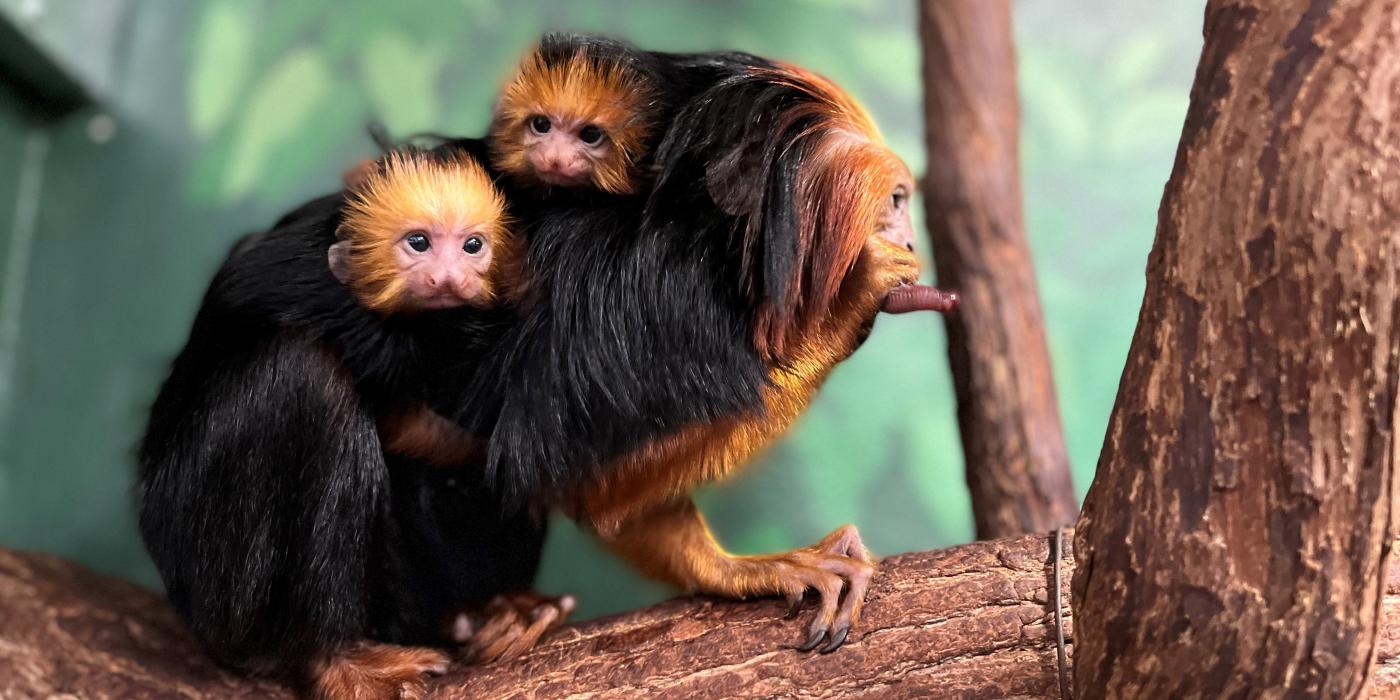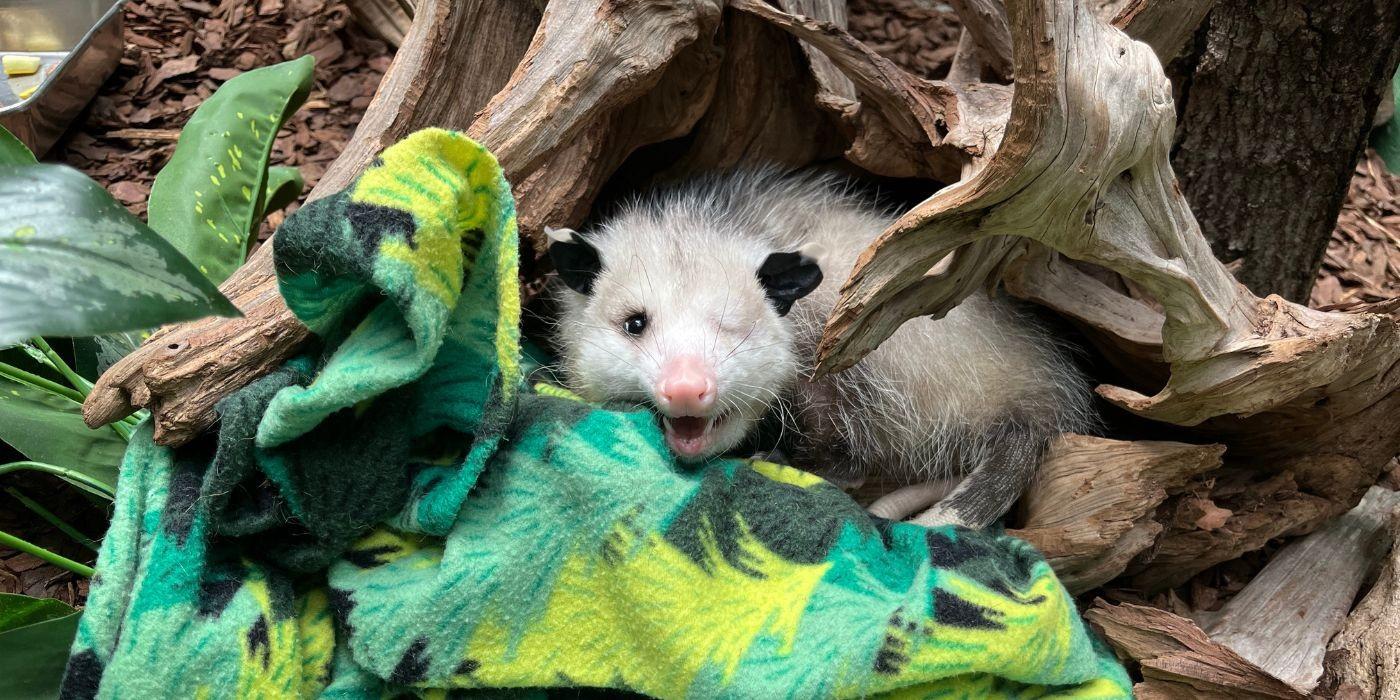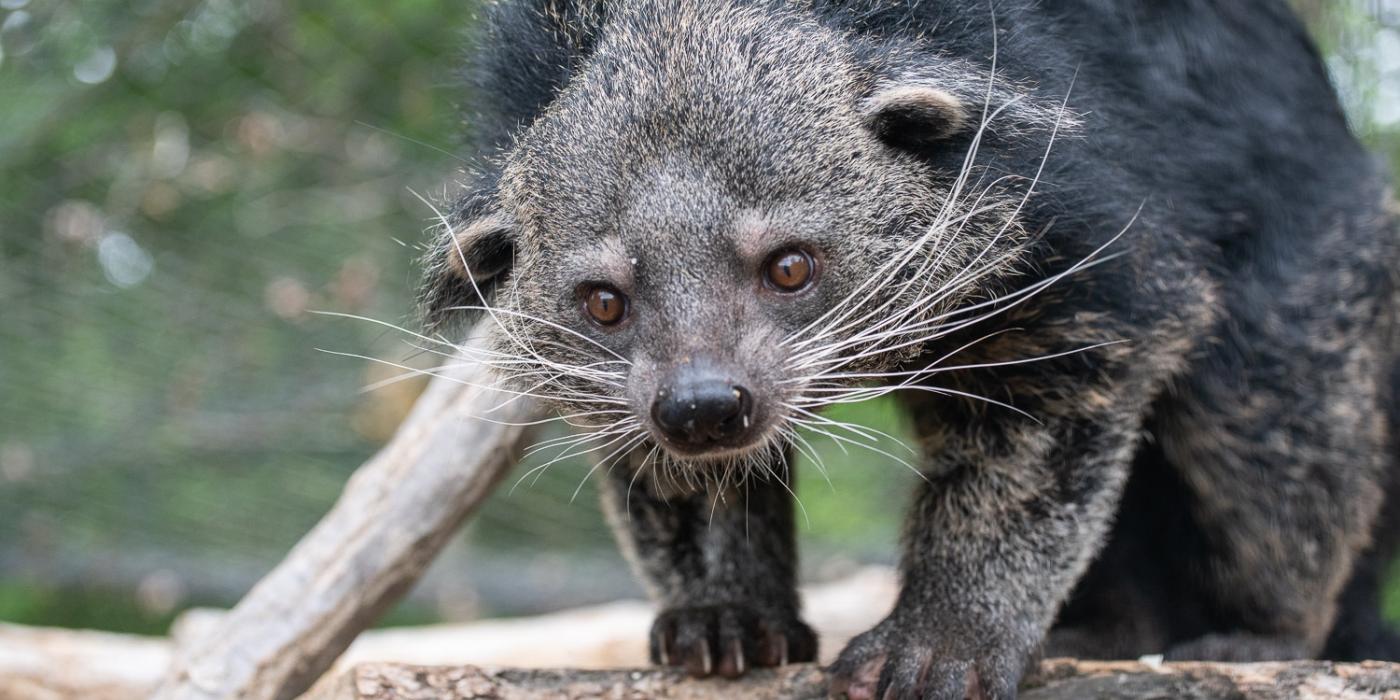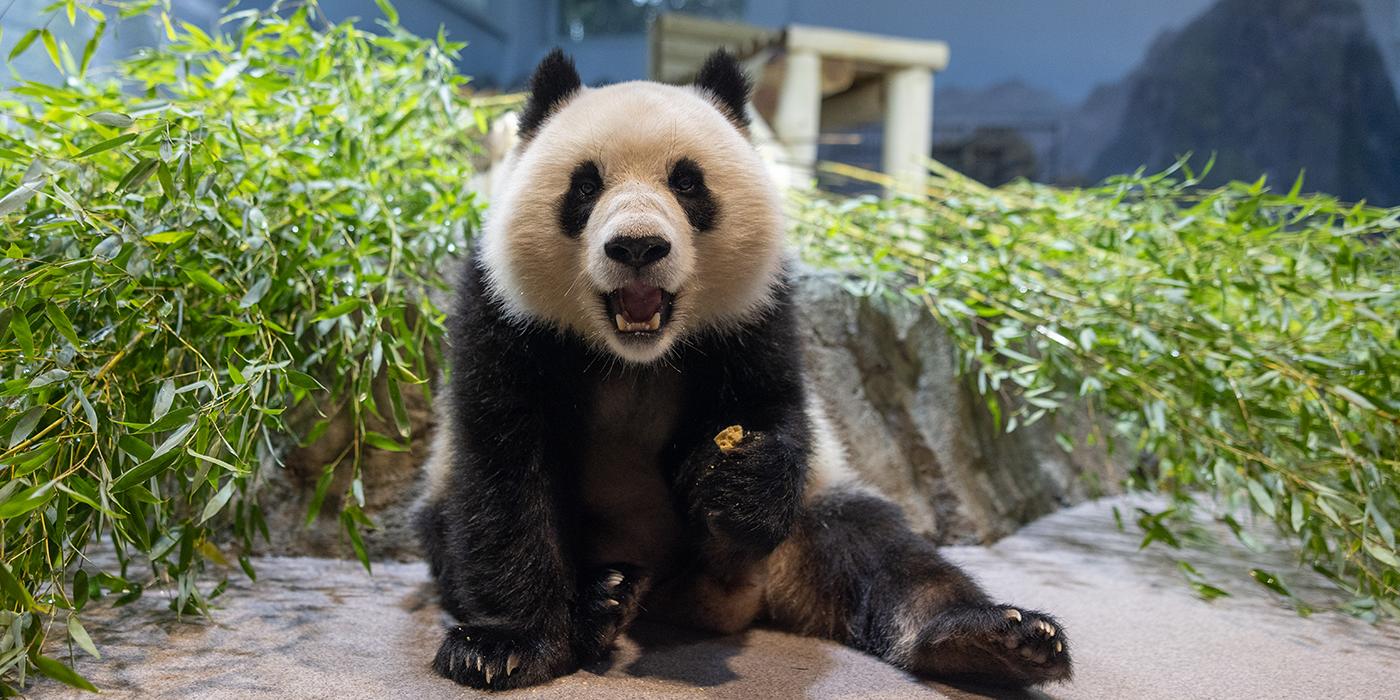Meet Our Golden-Headed Lion Tamarin Twins

On Oct. 7, the Small Mammal House team celebrated the arrival of golden-headed lion tamarin twins! They are the first of their endangered species born at the Zoo in 16 years. Get to know the mischievous and curious babies from keepers Mimi Nowlin and Maria Montgomery.
Have you picked names for the twins?
Not yet! The first few months are a critical time for baby golden-headed lion tamarins to bond with their parents. They will have their first veterinary exam when they turn 6 months old. At that time, we will be able to determine their sexes and choose names for them. Meantime, we can tell who’s who by their body markings. One baby has a prominent white patch on its tail. The other has an abundance of gold color throughout its body.
A fun fact about golden-headed lion tamarins is that they typically give birth to twins! Sometimes they give birth to singletons or triplets, but twins are the most common offspring for this species.
What are their personalities like?
The babies’ traits seem to reflect those of their parents. Lola, their mother, is an outgoing and curious tamarin who enjoys interacting with enrichment and puzzle feeders. Golden Mane is like mom: playful, curious and mischievous! Father Coco tends to be more shy and reserved, and White Tail takes after him; they are more cautious, observant and stick close to dad’s side.
We often see the babies explore the habitat together. When they do, their individual personalities really shine through. They are most active between 10 a.m. and 1 p.m.
How are mom and dad adjusting to parenthood?
These babies are the first offspring for both Lola, who is 4 years old, and Coco, who is 7 years old. It is typical for father golden-headed lion tamarins to carry the babies and give mom a break, and Coco fulfills that role. Coco is always on alert when the babies explore the habitat—he’s a bit of a helicopter parent! Lola allows the babies to be independent. When it’s time for them to nurse, she takes them into the nest box.
Have the babies tried any solid foods?
Yes! Although they are still nursing, our tamarin twins are also eating solid foods. Golden-headed lion tamarins typically start nibbling by the time they are 6 to 8 weeks old. At the Zoo, they eat a variety of produce, as well as a primate gel that is fortified with vitamins and nutrients. Some of the twins’ favorite foods thus far are grapes, waxworms and corn.
Do they have a favorite enrichment toy?
At 3 months old, they are not as excited about the toys as they are about the food hidden inside them. Typically, they wait for mom and dad to manipulate the enrichment item and uncover the food so that they can sneak in and take some for themselves! Food stealing is a typical tamarin behavior.
What do you enjoy most about working with them?
Over the years, Small Mammal House has welcomed 26 baby golden-headed lion tamarins. It’s a joy to observe their family dynamics. All family members take part in raising the babies. As the young grow, they learn how to be tamarins from their parents and older siblings. Depending on the size of the family group, the eldest siblings will learn how to carry the babies. Eventually, they start to share that responsibility with dad. It’s great preparation for parenthood in the future!
How can I help save wild golden-headed lion tamarins?
Conservation scientists estimate less than 6,000 golden-headed lion tamarins are left in their native Bahia, Brazil. The population is decreasing because of deforestation. Golden-headed lion tamarins live in tall evergreen broadleaf tropical forests and semi-deciduous forests. Much of their habitat has been cleared for agricultural use, including cattle ranching and cocoa plantations.
You can help protect golden-headed lion tamarins and their habitats! When you shop for furniture and other décor made of wood, check that the product is sustainably sourced (i.e. doesn’t contribute to deforestation) before you buy. And, spread the word! Introduce your friends and family to our tamarin twins. Learning about these monkeys and gaining an appreciation for them can inspire other to be more mindful about their purchases, too.
This story appears in the January 2022 issue of National Zoo News. As a public health precaution due to COVID-19, the Small Mammal House is temporarily closed to the public. There’s lots to see at Smithsonian’s National Zoo! Plan your visit here.Related Species:



